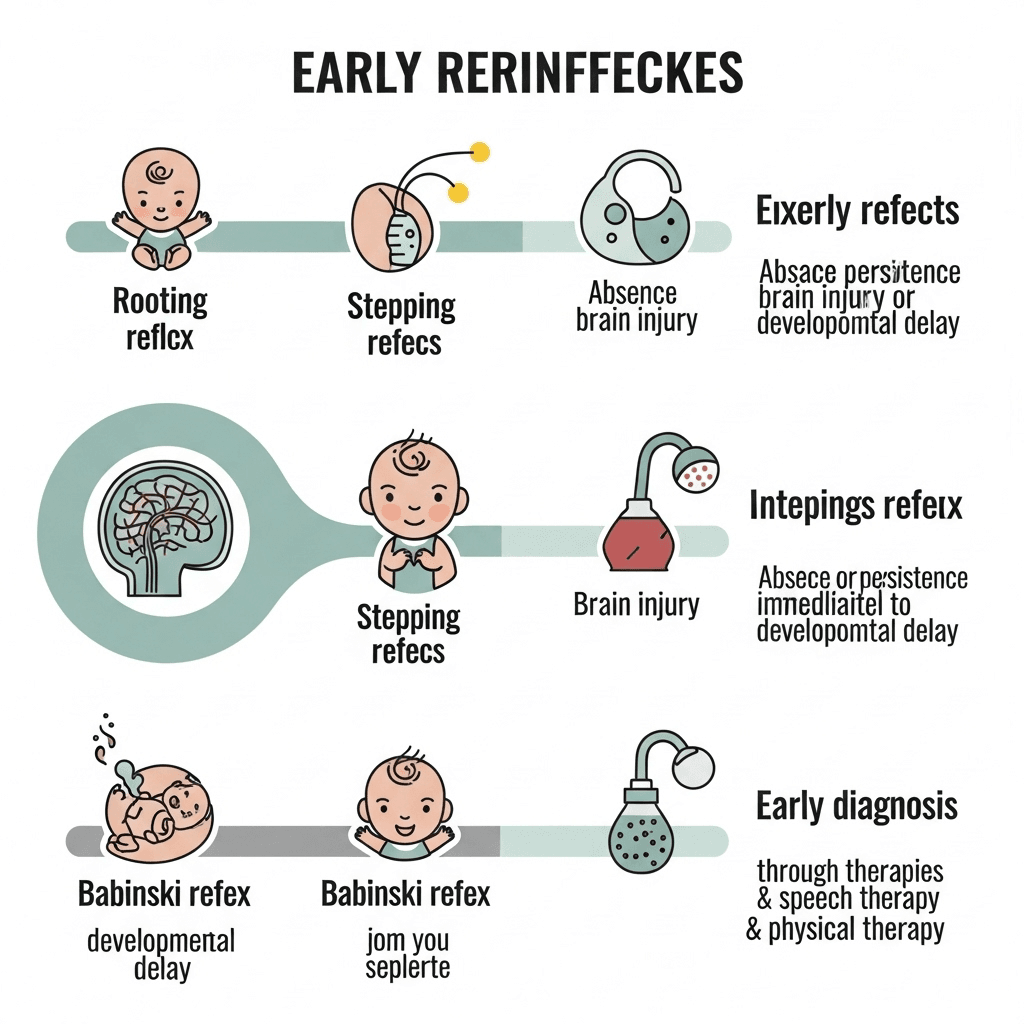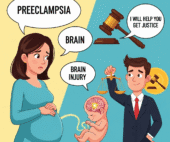When a baby is born, they arrive with more than just tiny fingers and toes they also come with a built-in set of reflexes. These involuntary movements help doctors gauge neurological development. And in some cases, they offer one of the first red flags for Cerebral Palsy.
This article breaks down the significance of early reflexes in Cerebral Palsy diagnosis, explaining how they work, why they matter, and what parents need to know.
What Are Primitive Reflexes?
Nature’s First Neurological Test
Primitive reflexes are automatic responses triggered by specific stimuli. They’re present at birth and fade over time as the brain matures and voluntary motor control develops.
Examples include:
- Moro Reflex: A startle reflex in response to loud sounds or sudden movements.
- Rooting Reflex: The baby turns their head when the cheek is stroked.
- Tonic Neck Reflex: Also called the “fencer’s pose,” where the head turns and one arm extends.
- Grasp Reflex: Baby automatically grasps fingers or objects placed in the palm.
These reflexes are essential during the newborn stage — but they’re supposed to fade. When they linger or behave abnormally, it could point to an underlying neurological issue like Cerebral Palsy Diagnosis.
Why Early Reflexes Matter in Cerebral Palsy Diagnosis
Delayed or Abnormal Reflexes as Red Flags
In CP, the brain’s control over movement and posture is impaired. That can mean:
- Reflexes stay active beyond the expected age.
- Reflexes are exaggerated or asymmetrical.
- Some reflexes may be absent entirely.
These patterns are crucial clues for doctors. For example, if a baby retains the Moro Reflex beyond six months, or if the tonic neck reflex prevents normal movement, a developmental delay or motor disorder may be suspected.
Reflexes Help Identify the Type of CP
Different types of Cerebral Palsy may impact reflexes in different ways. Spastic CP might present with hyperactive reflexes, while hypotonic CP may show diminished or absent responses.
These patterns, when combined with muscle tone observations and developmental milestones, help pediatric neurologists pinpoint not only whether a child has CP but also what kind they have and how severe it may be.
How Reflex Testing Fits into a Diagnosis
The Full Neurological Picture
Doctors don’t rely on reflexes alone to diagnose CP. But early reflex testing is often one of the first steps. It’s typically done during routine well-baby visits or developmental screenings.
If abnormal reflexes are noted, doctors may recommend:
- Brain imaging (MRI or CT scan) to identify structural damage.
- A full physical and developmental exam.
- Referral to a pediatric neurologist or early intervention team.
The goal is early detection because the earlier CP is diagnosed, the earlier support can begin.
What Parents Should Watch For
Knowing What’s Normal — and What’s Not
It’s important for parents to understand the general timeline of reflex development:
| Reflex | Appears | Typically Disappears |
|---|---|---|
| Moro | Birth | 4–6 months |
| Rooting | Birth | 4 months |
| Tonic Neck | Birth | 5–7 months |
| Grasp | Birth | 5–6 months |
If a child continues to show strong reflexes beyond these windows — or seems overly stiff, floppy, or unresponsive — it’s worth asking the pediatrician for a closer look.
Other signs that may pair with abnormal reflexes in Cerebral Palsy include:
- Favoring one side of the body
- Stiff or floppy limbs
- Delayed motor milestones (like sitting or crawling)
- Difficulty feeding or sucking
Early Intervention Makes All the Difference
Catching CP Early Changes the Game
Early reflex testing doesn’t just help with diagnosis it helps with planning. A confirmed or suspected diagnosis of CP can open doors to early intervention programs, therapy services, and personalized care plans.
Early therapy especially before age 3 takes advantage of the brain’s plasticity, helping children build motor skills, independence, and confidence.
For families, an early diagnosis also provides something equally valuable: answers. It gives context to a child’s development and a path forward to support their growth.
FAQs: Early Reflexes and Cerebral Palsy Diagnosis
1. Can Cerebral Palsy be diagnosed by reflexes alone?
No, Cerebral Palsy diagnosis cannot be made based solely on reflexes. While abnormal reflexes are often an early indicator, doctors also rely on brain imaging, developmental screenings, and motor function assessments to confirm the diagnosis. Reflexes, however, often provide some of the first signs that a full neurological evaluation is needed.
2. What does it mean if a baby doesn’t have reflexes?
Weak or absent reflexes may signal a neurological issue and could play a role in an early Cerebral Palsy diagnosis. However, they aren’t definitive on their own. Pediatricians typically recommend additional testing to determine whether delayed reflexes are linked to CP or another developmental condition.
3. Should I be worried if my child still has the Moro Reflex at 7 months?
Yes, the persistence of primitive reflexes like the Moro Reflex beyond the typical age range (usually around 6 months) can be a sign of atypical development. In the context of a possible Cerebral Palsy diagnosis, prolonged reflexes may point to motor delays or brain immaturity and should be evaluated by a specialist.
4. Do early reflexes return later in life with CP?
In certain cases of severe Cerebral Palsy, primitive reflexes that should have disappeared in infancy can persist or reappear later in childhood. These lingering reflexes are often considered when confirming or re-evaluating a Cerebral Palsy diagnosis, as they may affect coordination, posture, and overall movement control.
Bottom Line: Reflexes Matter and Parents Are the First to Notice
When it comes to Cerebral Palsy, time matters. The earlier it’s spotted, the better the outcome. Primitive reflexes might seem like small things a head turn here, a grasp there but they speak volumes about a child’s brain development.
Parents who notice unusual reflexes, delays, or asymmetries shouldn’t hesitate to ask questions. A single observation could lead to an early diagnosis and with it, the chance to start building a stronger future right from the start.
👉 Fill out our FREE Consultation Form today to speak with a legal expert. Your case could make a difference.





Preeclampsia Fetal Brain Injury Lawyer: 5 Hemorrhage & Stroke Claims
[…] leading to severe brain injuries such as a fetal brain hemorrhage (bleeding in the brain) or a fetal stroke. These internal neurological events can occur silently in the womb but leave lasting, life-altering […]